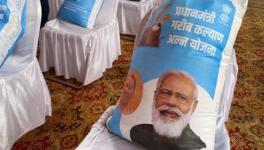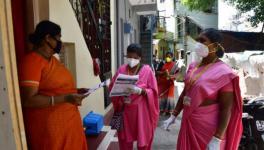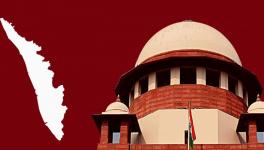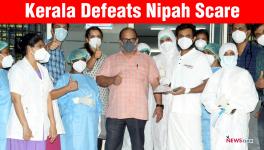How Kerala Controlled Nipah Outbreak With Quick Action and Mass Awareness
As Kerala marks one year of a successful battle against the Nipah outbreak that claimed as many as 17 lives, the health care system in the state has once come into the limelight with the question of how far the state has moved ahead from that situation. According to the World Health Organisation (WHO), Nipah virus disease is an emerging infectious disease spread by secretions of infected bats. It can spread to humans through contaminated fruit, infected animals, or through close contact with infected humans.
“Two crucial lessons from the outbreak have been exceptionally implemented. The first is detection and the second is prevention,” said Dr. G Arunkumar of Manipal Centre for Viral Research (MCVR) who was instrumental in detecting the Nipah virus. “Hospitals have more awareness about the virus and know what symptoms to look out for. Testing has also greatly improved since then,” he added.
On May 17, 2018, a 28-year-old young architect, Salih, from a rural area, Perambra, in Kozhikode district was rushed to one of the leading hospitals in Kozhikode town with complains of vomiting, high fever and he was in a mentally agitated. As his condition worsened, the doctors ruled out all the possible causes including Japanese encephalitis. Salih’s younger brother Sabith had died 12 days ago showing similar symptoms and his father and aunt too had the same symptoms.
Read More: Nipah Lessons: ‘It is High Time ‘One Health’ Concept is Applied in Public Health Surveillance’
As they had ruled out all the possible causes, the doctors who were treating the young man knew that there could be a possibility of an exotic virus, possibly never seen in the state. The doctors quickly decided to get help from G Arunkumar. The samples were sent for testing and MCVR pointed to the Nipah virus. However, as per the International Health Regulations of 2005, India is obligated to report such outbreaks of emerging infectious diseases to the World Health Organisation. Since, it had to be doubly sure of the detection of the virus, the samples were sent to National Institute of Virology, Pune.
Soon after the Nipah outbreak had been detected, the chief minister had announced an advanced Virology Institute in the state considering the absence of such an advanced institute in the state. Following that, the government on February 9 of this year had inaugurated the country’s first Institute of Advanced Virology, affiliated to the Global Virus Network, which has 45 centres of excellence in over 25 countries.
However, the state machinery did not wait for the final confirmation and they acted quickly to curtail the spread of this deadly virus. Hours after Salih was admitted in the hospital, the district medical officer had set up a team of entomologists and visited the home of the diseased in Perambra. The team had collected the samples of the mosquito to find out if there any chances of mosquito being the disease vector and they had fogged the area too.
Finally, on May 20, 2018, the final confirmation had reached the state health system which was already on high alert. By that time, KK Shailaja Teacher, the state’s health minister was already in town to handle the situation. On May 20 morning, the doctors were instructed to implement infection control measures like in the case of Ebola- isolating patients, using surgical masks and decontaminating surfaces.
So, it was clear that Salih and others contracted the infection from Sabith. Sabith was the patient zero and that was the first wave of infection. Sabith was admitted in Perambra Taluk Hospital on May 3, following which his condition continued to worsen. On May 5, he was shifted to Kozhikode Medical College since he had begun to lose consciousness and on the same night, he succumbed to the virus. As the cause was unknown, nurses attended him, and his neighbours and family members were come to close contact with him.
Read More: Deconstructing a successful containment procedure : Kerala’s Nipah Virus Challenge
The close contact with the patient zero had led to new cases- seven new cases in Perambra Taluk Hospital and 10 in Kozhikode Medical College. Another patient who had been infected during the first wave had gone to Balussery Taluk Hospital on May 17 and one other person had gotten the infection there. This situation had raised a second wave of infection at the Balussery Taluk Hospital.
Lini Puthussery, the nurse who had died of Nipah, had also contracted with the virus from the Taluk Hospital of Perambra while nursing the patient zero. Many in the health system, including doctors, nurses and other staffs, had taken care of the patients at heavy risk. This collective effort of the state’s health machinery, which took extraordinary efficient methods, were able to curtail the second wave of infection. All the possible measures were taken on May 20 itself and more than 2,000 people who had come in contact with the 19 confirmed cases were being watched closely on a daily basis.
Following this, the anti-viral drug Ribavirin and monoclonal antibody had been imported and tried in some patients. The intensive effort of the health machinery under the direct leadership of Shailaja Teacher had seen success after five weeks of the virus outbreak. The second wave of the virus, however, subsided with this thorough effort.
The state and health department had made all the efforts to alert the public and people became more vigilant. For propagating more information concerning the disease, all the possible mediums including social media platforms were used. At the same time, some fake news had also been propagated and it created a panic situation in the Kozhikode and its neighbouring districts.
“People were scared to go out. For a few weeks, the town was almost deserted. Some people were also fearful of mingling with us. The condition in Perambra was much worse,” said one of the nurses working at the Taluk hospital in Thamasserry.
TP Ramakrishnan State Minister of Labour and Excise, who hails from Perambra had camped in the area and led the campaign to vanish the unnecessary fears of the people.
Read More: Kerala Government Honoured by American Virology Institute for Nipah Virus Containment
“Many of those who contracted the illness acquired it in a hospital. Some were merely visitors who had come to see other patients. It is, therefore, time to examine how we can decongest our hospitals. Instituting a strict referral system and controlling visitors are sorely needed reforms. Bystanders who help out with many routine hospital chores can be reduced by appointing more caring staff. Infection control protocols within hospitals also need to be followed with intent, with universal precautions for health workers in dealing with any patient,” observed Dr. KP Aravindan, one of the leading health activists from the state.
Get the latest reports & analysis with people's perspective on Protests, movements & deep analytical videos, discussions of the current affairs in your Telegram app. Subscribe to NewsClick's Telegram channel & get Real-Time updates on stories, as they get published on our website.
























